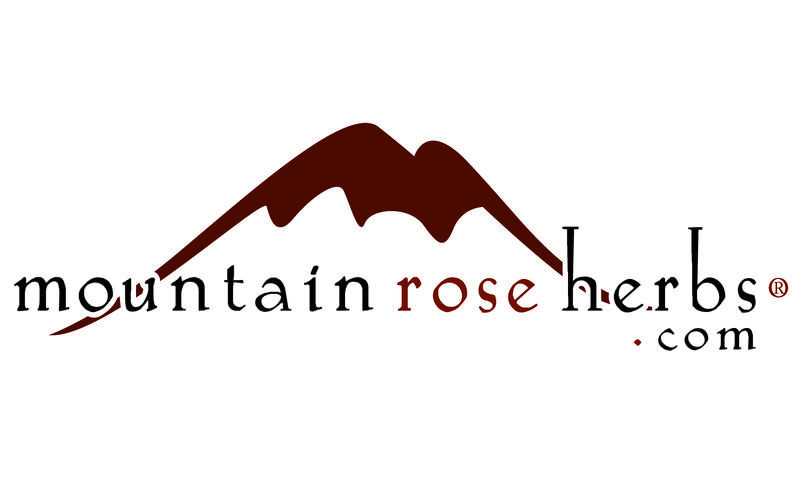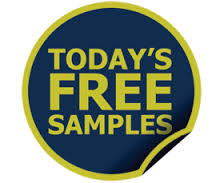Price Per bottle: How I see it
Why are some oils 10x more expensive?
I can get 10 bottles for the price of 1 with some brands.
I always wondered about this until I found out what makes essential oils a commodity. Many commodities (Oil, Gas, Minerals, etc) come from Mother Nature and there is a limited supply of them. This is what gives the product their initial set pricing. The degree of labor involved with producing a commodity along with how many hands it passes through (importers, distributors, etc) will tack on the bulk of the pricing margins. (2nd set of pricing)
The MAJORITY of essential oil distilleries out there are not doing sophisticated Mass Spectrometry and instead rely on gas chromatography which even low grade synthetic and chemically distilled oils pass with flying colors.
So 90% of the essential oil market is really flooded with Fragrance grade oils…see my Fragrance Vs. Therapeutic Oils page for more info. If you want to get into the “essential oil” and make lots of money then buy yourself some fragrance grade oils because the margins are great!!! (that was sarcasm btw)
All these distilleries/manufacturers know that consumers don’t understand Chemistry 101 and what makes oils more appropriate for just smelling nice and ones that actually have healing effects.
So this leaves us with 10% of brands technically being “Pure” essential oils. But beware of these terms, Pure, Therapeutic, Medicinal, etc. Legally these terms do not need to be backed with specific chemical analysis standards but I would say that for the most part if you see the term 100% pure (insert species) oil this usually means that a person is getting a product that isn’t mixed with something else…but this still is a long way to go to higher grade. The term Food Grade is usually a good sign of serious standardized testing leading to purity without use of chemicals etc..but still doesn’t mean that the oils are high in natural therapeutic constituents.
What about Therapeutic grade oils? That term is heavily used and abused and doesn’t mean a whole lot unless it’s backed by certain processing standards. Look I could go huff some synthetic orange oil cut with hexane and afterwards feel a little more alert and essentially it could be stated that it had a therapeutic effect on my level of attention for 2 minutes! So you see it’s just funny language semantic sales games that most companies and labelers play to market their chemical concoctions to the uneducated consumers.
Therapeutic oils should have their product analyzed for all constituents present so that the consumer can request at time of manufacturing spectrometry analysis for their particular bottle/batch purchased. The consumer can then take that data and compare lets say Brand A Pine Oil vs. Brand B Pine Oil and they would see a difference in number of compounds and could also note specific ratios and levels of the specific compounds.
For example if I wanted a certain oil for its anti-inflammatory properties, I would pick out of three brands of high grade oil and look to see which one had a higher level of Sesquiterpenes. So what this means is that there is no such thing as one high grade oil company producing the most ideal oil type for every single person! As long as the companies are doing the highest standardized constituent testing then it is up to the user or practitioner to figure out which oil type from which company had the specific compounds that would be most advantageous for the therapeutic goal.
Another SCAM: Most raw material used for lets say Lavender is a mix of 3 species and one being a hybrid. There are more than 20 different species. The three most important lavenders commercially are: true lavender, spike lavender and lavandin. 95% of manufacturers mix all three because it is cheaper to produce. One species is more fragrant, one plant produces 3 times as much oil volume, and one holds color and stability longer. Now I just wanted a lavender for a therapeutic healing goal, only two of the species out of 20 I would use.
So what the heck are therapeutic constituents?
Welcome to chemistry 101
There have been enough studies out there where we now know what each of these organic compounds in plants/herbs do to the human body. Exclusive high grade oils contain the maximum number of these detectable compounds. For example, your standard Peppermint oil might have 100 constituents show up in Mass Spectrometry analysis. A Higher grade oil might have 600! When it comes to the level of therapeutic effect of an oil, in general the more constituents the greater the physiological effects it will have on the body. The level of constituents is due to how many sources were used in the oil blend, the soil quality climate and farming practices used to grow the plants, and finally the processing techniques used to make the final product.
What about those expensive oils that are so exclusive and in limited quantity reserves?
In general the essential oils that come from farms that do not have mass production capabilities and are not using conventional growing practices, have fewer raw materials to work with, labor and hard costs are higher (no inorganic fertilizers), and production can vary year to year because of weather. When was the last time you were hiking and stumbled across a huge field of watermelons or peppermint plants and those plants were just growing wild for 50 acres? It’s a pretty rare thing. Mother Nature in general is not wasteful like silly humans. She only produces what is required with minimal energy exchanged for local animals and insects. The animals and insects take only what they need. The delicate life cycles of these various kingdoms has not been tampered with.
In general various species of plants are native to certain areas of the globe based on the climate. With mass farming technologies, more species now can be forced to grow in a wider variety of climates and even in poor soils. Lavender, for example, is a Mediterranean plant, and requires a similar climate to thrive. The Provence region of France is where most lavender is commercially grown. I was driving in the middle of Texas about 5 years ago and came across 20 acres of Lavender! I rest my case..
So with farming technology today we can transplant species to different climates and zones but we can never quite replicate Mother Nature. There are deeper reasons why certain lavender species thrived in certain regions and why certain hardy strains of plants became primary. The strains that have survived in certain regions naturally without artificial cultivation have stronger genetics. It is these same factors that are responsible for some oils being more therapeutic than others.
Summary about High Cost vs. Low Cost Oils
· Low Cost Oils: Conventional, commercial, mass production farming produces low grade therapeutic / high profit margin oils (commonly found in retail stores. If you want to know specific brands, I can only disclose this over the phone)
· Low Cost Oils: Not first expeller pressing but usually third or fourth processing phase (see High End Reserves click here
· Low Cost Oils: Unstable shelf life due to low number of constituents. The amount of organic compounds is directly correlated with the quality of the farming practices, soil, as well as how the plant material was processed. Learn more about Organic Vs. Biodynamic Vs. Wildcrafted click here
· Low Cost Oils: Use synthetic compounds for cutting the oil (distillation with chemicals), preservatives, odor enhancers, color stabilizers, texture and viscosity enhancers.
· High Cost Oils: First distill with low pressure low heat
· High Cost Oils: At least Organic might be Wild crafted (see the Wildcrafted and Organic Scams)
· High Cost Oils: Higher number of organic constituents proven through mass spectrometry and other industry
standards like High Performance Crystal Spectroscopy)
· High Cost Oils: Use no preservatives and have longest shelf life stability.
· Highest Cost Oils: High mineral and bacteria hydrophilic soils, no pesticides, non conventional farming practices, low annual production, distilled from one source for raw material. Growing source are lands/climate that is native to the species.
· Highest Cost Oils: Low molecular weight for therapeutic compounds. High Voltage potential and leading to Zeta potential in blood stream.
· Highest Cost Oils: Low cluster size and undamaged molecular bonds
· Highest Cost Oils: Produce significant physiological changes as measured with Electro-Phonic Imaging/Gas Discharge of human organism.
For our non-brand name oils (private stock, limited artisan reserve), we do not work with essential oil brokers. These are not branded oils. These are grown directly by the farmers who have their own "small" distilleries who provide the highest grade oils in very limited quantities.
The cost of private reserve oils is extremely expensive as just a few cases can be bought at a time. These oils come in a bottle without any labels or logos.
I strongly recommend sampling some of the lower priced oils and the higher cost oils. See my Free Samples page to check the samples you want sent to you.
Cost per drop varies based on how the oil was grown and processed
Jasmine can cost 32 cents per drop all the way up 1.28 per drop for private reserve quality.
Ylang Ylang can cost as low as 3 cents per drop and as high as 11 cents per drop.
See my Degrees of Quality page so you know if you are paying too much per bottle.
WATCH OUT FOR LIST
Know Before Buying
Helpful Information
Price per bottle - Essential Oils
It isn’t complicated to figure out the industry as far as manufacturing costs to make these oils, retail, distributors, etc etc. and how that makes the retail prices of an oil.
But what about those other more unique Essential Oils out there that are sold publicly but on a small scale or some Oils that are not even publicly available?
Highest Grade Essential Oils just like any commodity’s price point is very much related to the perceived value. There isn’t an unlimited quantity and for some grades and sources there is only a small production line produced that year. Just like some of the more exclusive wine reserves where a Winery just produces 300 cases or something like that.
Especially when you see Wildcrafted oils one can almost always assume limited quantity and unpredictable yields because the weather and other environmental instability could affect the production differently year to year.
Back during the Egyptian, Roman, Mongolian dynasties, oils and the perfumes made from them were traded sometimes for being worth their weight in gold. They carried powerful medicinal qualities but also the best smelling potent ones fetched a high price because the royalty or rich demanded it because it as an important part of portraying their high status.
Still today some bottles of oil can be hundreds to thousands of dollars per ounce. In one area for example there is a small grove of 40 year old Frankincense trees. Doing an HPLC analysis of that species there showed some 200 extra constituents that were not even present in the traditional Frankincense that is farmed for the major oil companies. (see my frankincense page) I have reviewed all the major brands and private estate oils.
I gave that example because I was fortunate enough to visit in the Arabian Peninsula (Oman, Yemen) very recently. In my research for my website I came across the family that owned those lands and the trees grew upon that property. I had been planning a trip to Turkey anyways and figured one stop on the way might be nice. I also couldn’t refuse that they offered to pay for my flight out there.
Part of their hospitality was because they knew that I had some good connections to get the oil they were producing from the trees tested with advanced methods back in the US. The reason for their intense interest was because their oil seemed to be curing many different types of adverse health conditions in their family.
While some had religious beliefs about why the Oil was causing healings, others in the family wanted to take a more scientific approach.
The oil bottle that they gave me was made from gold, silver, and platinum. I was so nervous bringing it back traveling because they sold these bottles for around $1000 USD each. I ducktaped it into a shoe just to make sure I didn’t get lost.
Bit of a tangent…
If we look at the more well known brands and main stream companies I took a look into their whole product life cycle and found that the biggest companies had almost identical production costs. At the end of the day each company would set the various prices more for marketing purposes..in other words don’t assume because an oil is $10 or $20 more that that always means better quality.And vice versa some of the larger companies can actually afford to produce a higher quality oil by doing lower temperature and less extreme extraction methods (which produces higher grade but not as high volume). This can give them a much lower price than some other smaller companies so their lower prices don't necessarily always reflect poorer quality.
Name:
Email:
Number:
Best time to call:
Time Zone:
Comments/ Feedback
Please include feedback so it's easier for me to help you.
I only will try to help you based on the answer to your questions.
Which essential oil brands best serves You? I compile useful information to help people make a better decision.
If you are interested in getting a certain brand, take my essential oil quiz first and I will send you samples from the brands that you should consider based off of the Quiz results below. I only will try to help you based on the answers to the questions. Leaving extra comments and feedback that wasn’t covered by the quiz is great too.
If you have a sincere essential oil question that I haven't answered on my website, Please let me know ASAP and I will try to answer it by calling or emailing you back.
Are you a Health Practitioner or a residential user??
What type do you want?
Extraction:
What grade do you want?
Do you care if solvents are used in your oils
Do you care if the oil has a "herby" smell?
Scent:
Distill: Do you want only first distill oil?
Which is more important:
Which brand(s) are you mainly interested in
If other, which one?
The following questions are what I feel are the most basic fundamental ones that you "should" know before attempting to pick your brands and types of oil.
I have worked with and tested nearly every brand of essential on the market. I will contact you personally and help you find the right essential oil brand for your personal or clinical use.
Are you seeking more info about a particular brand or type?
How familiar are you with using essential oils?
Do you know your Ayurvedic Body Type? AKA Dosha Type? If not please take the quiz below and write in your body type into the Quiz comments.
What are you using essential oils for mainly?
Do you want oils grown not in their original native area?
Do you not mind companies that grow the plants not in the peak growing season? This provides a lower cost oil and generally not good for therapeutic usage.
Does it need to have a long Shelf life?
Are you going to be selling them
Would you be interested in reduced price oils if near end of expiration date?
Are you interested or willing to submit a review on the oil samples that we send out?
The Largest essential oil review on the net.
...because every company said their quality was the best.
Which essential oil brands best serves You? I compile useful information to help people make a better decision.
MyEssentialOilReview.com
Ask for free samples of any oil we carry.
I spend several hours a day putting together sampler packages for anyone who calls me.
Ask for Beth when you call.
Today's Special freebies
At Cost specials to first time people coming to my site













